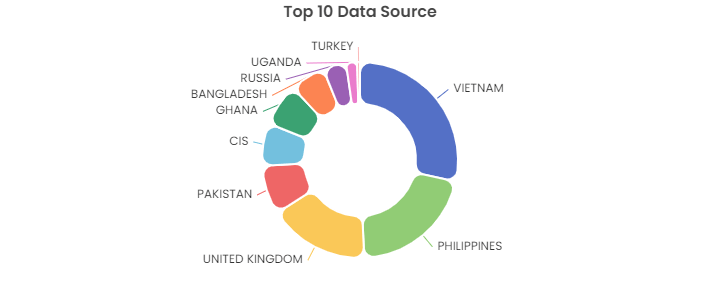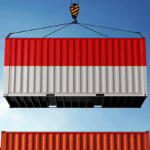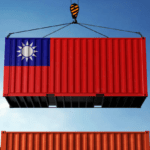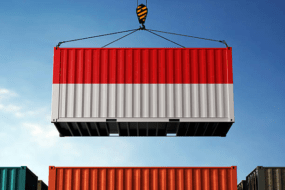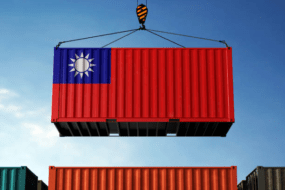- Home
- Trade News
- What is LK-99: Full Explanatio ...

Introduction
Imagine a material that defies the norms of electricity, where currents flow without resistance, and energy loss becomes a thing of the past. Meet LK-99, a rising star in the world of science, and it’s causing a sensation among experts. The masterminds behind this breakthrough? A brilliant team from Korea University, led by the visionary researchers Sukbae Lee and Ji-Hoon Kim.
Now, picture a century-long journey that has led us to the concept of superconductors—materials that shrug off electrical resistance and obliterate magnetic fields. This isn’t just about being energy efficient; it’s about sustaining the flow of electricity with virtually no loss due to heat or light.
While we’ve seen glimpses of this magic before, those materials demanded extreme conditions, chilling down to around -180 degrees Celsius (-292 degrees Fahrenheit), which isn’t exactly user-friendly. After all, what good is energy efficiency if you have to burn a ton of energy just to create the right environment?
LK-99 is a new material that could change the way we use electricity. It’s like a special type of substance that can let electric current flow without losing any energy as heat. This is a big deal because our usual materials waste energy when electricity flows through them. Other similar materials exist, but they only work when it’s extremely cold, which is not practical for everyday use.
But here’s the exciting twist. LK-99 might change all of that. What makes LK-99 so special is that it could work at normal temperatures. It’s a potential game-changer, bringing a revolution to industries like electronics, energy, and transportation. If that’s true, it could make things like computers and energy systems much better and more efficient. It’s like finding a new tool that can do a job really well, without needing special conditions.
What are superconductors?
You might be thinking what exactly are superconductors – these are like the rockstars of materials. Imagine a material that lets electric charges zoom through it without any roadblocks. That’s what superconductors do!
These special materials were uncovered more than a hundred years ago, and they’re like the secret sauce behind modern marvels – from high-speed trains to life-saving medical tools and even the way we send energy. But, there’s a twist in the tale.
Our usual materials, like copper and aluminum, are like traffic jams for electric current – they slow it down and waste energy as heat. But guess what? Superconductors play by different rules. They team up electrons using a magical quantum trick, allowing them to glide through the material like champions, with zero resistance and no energy loss.
But here’s the catch – this superpower only works when things are freezing cold, colder than a polar bear’s picnic. We’re talking temperatures so chilly that it makes the North Pole seem cozy! And you need fancy machines, like liquid helium coolers, to make this super-dance happen. That’s why superconductors were kind of like divas, only performing in extreme conditions.
So what is LK-99?
Imagine a material that defies the norm, a potential superhero in the world of science – that’s LK-99, born from the minds of researchers like Sukbae Lee and Ji-Hoon Kim at Korea University. This substance, with its gray-black look, might just be the missing piece to the superconductivity puzzle.
Unlike its chilly counterparts, LK-99 dares to function at room temperature. That means no more extreme cold required! It boasts a hexagonal structure with a twist, thanks to a sprinkle of copper, turning it into a real-life superhero of conductivity. It was July 22 when the scientific arena lit up – South Korean physicists dropped two preprint papers on arXiv. Think of it as science’s version of a sneak peek before the official show.
In their papers, they made a bold claim – they created the world’s first room-temperature superconductor, a material named LK-99. And they backed it up with a jaw-dropping video of the compound levitating over a magnet – a signature move of superconductors. But, like any big act, there were sceptics in the crowd.
Michael Norman, a physicist from Argonne National Laboratory, didn’t hold back, calling the Korean team “amateurs” in an interview with Science magazine. The doubt is rooted in history – many have shouted “Eureka!” about room-temperature superconductors before, only to stumble when faced with scientific scrutiny.
Just a couple of years back, Ranga Dias and his team claimed to have found such a superconductor, celebrated in the prestigious journal Nature. But guess what? The party got crashed when the article was pulled down due to questions about data handling. Replicating their findings? Not so easy.
So, here we are, August 3, 2023 – LK-99‘s grand entrance is making waves, but the sceptics aren’t sitting down. The scientific realm is buzzing with doubt due to past disappointments and hiccups in the pre-published papers. Independent squads are taking up the challenge, attempting to recreate the Korean team’s magic. Brace yourself, as August might just reveal if LK-99 is the real deal or just another act waiting for its final review.
How superconductors work
Imagine if we could banish energy waste, like turning off a faucet that’s been dripping for too long. Picture this: our ordinary copper wiring, the stuff that powers our homes, is a bit like a leaky pipe. As electricity races through it, it collides with atoms along the way, generating heat and causing precious energy to vanish into thin air. This disappearing act is known as electrical resistance, and it’s responsible for letting up to a whopping 10% of electricity slip away as it journeys through power lines to our houses. Our gadgets suffer the same fate too.
But hold onto your hats because here’s where the superhero of science swoops in – the room-temperature superconductor. If we could build wires and power lines from this magical material, it’s like plugging up those leaky pipes. The electrons zipping through it join forces, avoiding atom collisions like pros, and glide through freely.
Sure, we already have superconductive materials doing cool things in the world, like in those nifty MRI machines you might have seen at the hospital. But here’s the catch – they need to chill out, literally. Think of it as an arctic vacation, with temperatures plummeting to a mind-numbing minus 459 degrees Fahrenheit. Or, if they’re in a real rush, they can handle extreme pressures that would make the Hulk sweat. It’s like asking them to perform a high-speed stunt under insane conditions.
And speaking of high-speed stunts, Central Japan Railway has a futuristic trick up its sleeve. They’re crafting a magnetic levitation train, the SCMaglev, set to zip travelers between Tokyo and Nagoya. It starts with rubber wheels for a modest 93 mph, and then bam! The superconducting magnetic system takes over, propelling it to a mind-boggling 311 mph.
But wait, there’s an ice-cool twist. Right now, they rely on a special superconducting alloy, niobium-titanium, and have to chill it down to a chilly minus 452 degrees Fahrenheit using liquid helium. Now, imagine if LK-99, our room-temperature superstar, stepped into the spotlight. Not only would it save the day by making the process way cheaper, but it could also prevent us from hoarding helium like treasure hunters. Helium’s not vanishing anytime soon, but it’s as rare as a unicorn, produced in just a handful of countries. If supply hiccups strike, brace yourselves for price chaos.
So, there you have it, the tantalizing tale of room-temperature superconductors – the key to a more efficient and sustainable energy world!
How is LK-99 made
In a stunning twist, the South Korean geniuses behind LK-99 dropped a game-changing bombshell in a recent paper. They’ve managed to whip up a groundbreaking material, a true pioneer in the realm of science. But that’s not all; a second revelation shook the world – LK-99 isn’t just any compound; it defies gravity itself, levitating right at room temperature.
In a jaw-dropping declaration, they proclaimed, “We’ve accomplished the unimaginable – crafting a room-temperature superconductor that operates in the open air, no pressure chambers required, thanks to our modified lead-apatite structure called LK-99.” And oh boy, the scientific community is buzzing like a beehive, captivated by this monumental breakthrough.
Chemical properties
LK-99 is a mix of powdered compounds of lead, oxygen, sulphur and phosphorus. LK-99 has its own unique chemical makeup, dancing around Pb9Cu(PO4)6O – a slightly different twist compared to regular lead-apatite (Pb10(PO4)6O). Here’s the twist: about a quarter of the Pb(II) ions in the apatite structure are swapped out for Cu(II) ions, giving it that special spark.
Now, let’s dive into the magical process of creating LK-99. The masterminds behind it, Lee and his team, have their secrets. They start by mixing lead(II) oxide (PbO) and lead(II) sulfate (Pb(SO4)) powders in a 1:1 ratio, then cranking up the heat to a sizzling 725 °C (1,000 K; 1,340 °F) for a full day. This concoction leads to the formation of something called lanarkite.
But that’s not all – they’ve got another trick up their sleeves. They combine copper (Cu) and phosphorus (P) powders in a 3:1 ratio, toss them into a sealed tube under vacuum conditions, and let the magic happen at a fiery 550 °C (820 K; 1,000 °F) for 48 hours. Out of this comes copper(I) phosphide (Cu3P).
Now, with these enchanting ingredients in hand, they grind up lanarkite and copper phosphide crystals into a fine powder. This powder is placed into a sealed tube under vacuum once again and heated up to a scorching 925 °C (1,200 K; 1,700 °F) for anywhere between 5 to 20 hours. Voilà! What emerges is the fascinating transformation: Pb2(SO4)O + Cu3P → Pb10-xCux(PO4)6O + S (g), with x dancing between 0.9 and 1.1.
It’s like a scientific recipe with a dash of magic, resulting in the birth of LK-99!
Physical properties
Imagine a material that could conduct electricity without any resistance, even at normal room temperatures – that’s the magic LK-99 promises. But here’s the twist: the original published articles don’t directly claim to see the textbook signs of superconductivity, like zero resistance or the Meissner effect. Instead, they showcase the material’s fascinating behavior – it’s like watching a sample of LK-99 float above a magnet, hinting at its superconducting potential.
You see, many materials can tease us with the possibility of being high-temperature superconductors, but researchers usually go the extra mile to demonstrate a bunch of other expected traits. They hunt for signs like flux pinning, AC magnetic susceptibility, and even the Josephson effect. But here’s the catch: as of August 1, none of these have shown up in the original experiments or their attempts at replication.
Now, let’s dive into the mechanics behind LK-99‘s potential superpowers. Picture this: swapping out some Pb2+ ions with smaller Cu2+ ions causes a tiny reduction in volume, leading to an internal stress party inside the material. This stress might be what creates a sort of quantum well between different elements, giving birth to superconducting magic.
The researchers, led by Lee and his team, go even further. They claim that LK-99 dances to the tune of a magnetic field, possibly due to the Meissner effect. They do this trick by applying LK-99 to a non-magnetic copper sample using a process called chemical vapour deposition. You might find it intriguing that regular lead-apatite isn’t much of a conductor, but when doused with a bit of copper, it’s like it transforms into a superconductor or, at hotter temperatures, a metal. They’re not talking about a sudden shift in behaviour as the temperature changes, though.
Now, let’s talk about the science behind the scenes. The foundation of these claims comes from a 2021 paper by Hyun-Tak Kim. In it, he spins a tale of a “BR-BCS” theory, blending classic metal-insulator transition wisdom with the famous Bardeen–Cooper–Schrieffer theory of superconductivity. And they didn’t stop there – they also pulled inspiration from J.E. Hirsch’s daring theory of hole superconductivity, known for stirring up debates.
Fast forward to August 1, 2023, and we’ve got a trio of independent groups diving deep with a tool called density functional theory (DFT) to study LK-99. Sinéad Griffin from Lawrence Berkeley National Laboratory used a fancy tool named the Vienna Ab initio Simulation Package to conjure up a vision: LK-99’s structure could have these cool bands that hang out together, hinting at the potential for superconductivity to flourish. Si and Held jumped into the mix too, finding similar band behaviour and tossing ideas around about how different tweaks could spice things up.
So, as you can see, LK-99 is like an unfolding scientific mystery, captivating minds and sparking debates about its superconducting prowess.
Raw Materials of LK-99
The main raw material of LK-99 is Lead HS Code: 78020000.
Import Top 10 Data Source
According to our platform, we analysed the data source of imports for Lead HS: 78020000. The presented chart highlights the top 10 countries’ data sources of Lead HS: 78020000, with Vietnam, the Philippines, and the United Kingdom positioned within the top three. This means that Lead HS: 78020000 Imports are largely recorded by Vietnam, Philippines and United Kingdom.
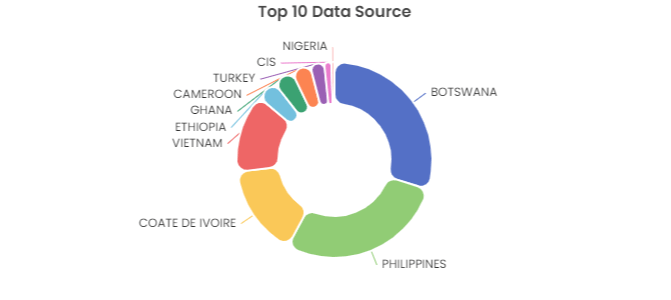
Export Top 10 Data Source
According to our platform, we analysed the data source of exports for Lead HS: 78020000. The presented chart highlights the top 10 countries’ data sources of Lead HS: 78020000, with Botswana, Coaste De Ivoire and Phillippines positioned within the top three. This means that Lead HS: 78020000 Exports are largely recorded by Botswana, Coaste De Ivoire and Philippines.
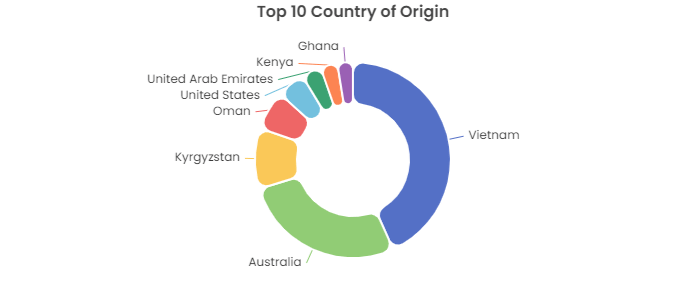
Top 10 Country of Origin
Based on our platform’s analysis, we examined the data source for the origin of Lead HS: 78020000. The chart provided showcases the top 10 countries as data sources for Lead HS: 78020000, with Vietnam and Australia emerging as the primary contributors. This indicates that Vietnam and Australia play a significant role in the exports of Lead HS: 78020000.
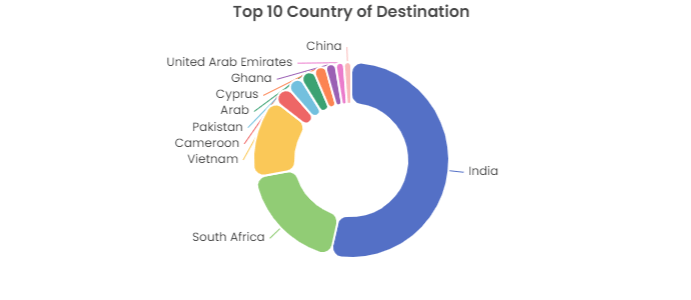
Top 10 Country of Destination
According to data from our platform, the chart displays the top 10 countries of destination for Lead HS: 78020000 shipments. India and South Africa emerge as the primary recipients, receiving the highest number of Lead HS: 78020000 shipments to their respective countries.
Who are the suppliers / exporter of LK-99 Raw Materials

Top 10 suppliers
Based on the data from our platform, the chart showcases the top 10 companies that are the suppliers of Lead HS: 78020000.
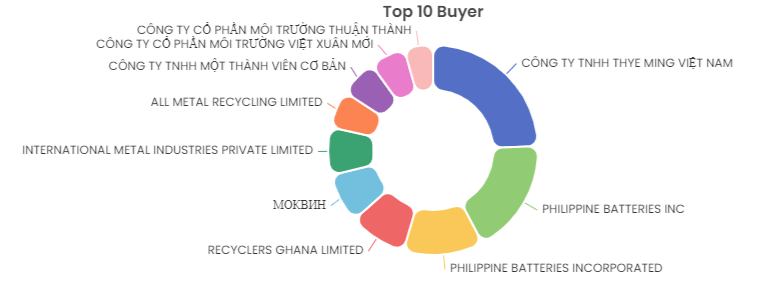
Top 10 Buyer
Based on the data from our platform, the chart showcases the top 10 companies that are the buyers of Lead HS: 78020000.
Why is LK-99 Important?
Picture this: a material that could change the way we power our lives. That’s what LK-99 is all about. But hold on, the journey to unlock its secrets is just beginning, and it’s turning out to be a rollercoaster.
Two different teams set out to replicate the South Korean experiments that stirred up excitement. The result? Not quite what everyone expected. Some glimpses of superconductivity popped up in tiny samples, thanks to Chinese researchers, but the grand replication? Not there yet.
You know science is no sprint, it’s a marathon. Confirming the Korean team’s discovery was supposed to take about a week. But in the whirlwind of anticipation, theoretical studies raced in to decode LK-99’s quirks. One physicist, Sinéad Griffin, fired up supercomputer simulations to analyze the material’s powers. She even dropped an Obama mic meme to accompany her findings – talk about making science trendy. But wait, fellow physicists weren’t buying the mic drop proof. Griffin herself stepped in, clarifying that her results didn’t scream “superconductivity proof,” but they did unveil some intriguing structural and electronic features.
Now, even if LK-99 ultimately proves to be the superhero of superconductors, don’t expect an overnight transformation. Turning this discovery into practical technology could be a marathon within a marathon. The road to mass-producing the material could stretch for years. Griffin’s simulations hint that crafting the material might be like taming a wild beast.
Here’s the scoop: LK-99 might not be the ultimate jackpot, but it’s a treasure trove of possibilities. It’s like stumbling upon a hidden path to find room-temperature superconductors – something scientists have been chasing for ages. Imagine replacing those copper cables in our power grids with superconducting ones, slashing energy loss. Think about the boost for quantum computers and futuristic transport.
Giuseppe Tettamanzi, a wise mind from the University of Adelaide, points out that the dream of superconducting cables has tantalized us forever. It could revolutionize energy savings and pave the way for quantum leaps in technology.
So, while LK-99 might not be the ultimate prize, it’s igniting a blaze of curiosity, pushing us to redefine the way we power our world.
The most trustable and reliable source for Trade Data.
TradeData.Pro is a reliable and trustworthy source of trade data proudly made in Singapore, a country known for its stable political climate and trade-driven economy. Presented by Commodities Intelligence Centre, a government-linked company and a joint venture of Zall Smartcom, SGX, and GeTS, TradeData.Pro has received positive feedback from the market since its launch in 2018 for its extensive coverage, affordability, and fast response. The platform has been awarded the Singapore Quality Class in 2020 and the Stevie Award Gold in 2021.
Traditionally, obtaining critical data to reveal trends, identify market opportunities, track competitors, buyers, and suppliers, and better understand the potential of the supply chain has been a challenge. However, the detailed shipment information that is part of government import and export filing requirements does exist and forms the core of global trade. TradeData.Pro has gathered and packaged this information as business intelligence, which helps companies understand the flow of goods across borders and features the world’s largest searchable trade database. TradeData.Pro reviews, standardizes, and cleans data and delivers it in an intuitive format, making it easier for businesses to access.
Businesses interested in staying updated on Vietnam, the hottest industry lately, can access all relevant information on the TradeData.Pro platform. They can find the exact product they’re interested in by checking out the trade database demo at https://tradedata.pro/asia-trade-data/vietnam-import-export-data/. To learn more about accessing new markets, visit https://tradedata.pro/trade-database-demo/
Business Economy Export Global Import International Trade Markets Opportunities Supplier Trade Data Pro Worldwide
Recent Posts
Archives
- June 2025
- May 2025
- April 2025
- March 2025
- February 2025
- January 2025
- December 2024
- November 2024
- April 2024
- March 2024
- January 2024
- December 2023
- November 2023
- October 2023
- September 2023
- August 2023
- July 2023
- June 2023
- May 2023
- April 2023
- March 2023
- February 2023
- January 2023
- December 2022
- November 2022
- October 2022
- September 2022
- August 2022
- July 2022
- June 2022
- May 2022
- April 2022
- March 2022
- February 2022
- January 2021
Categories
Recent Post
Indonesia Exports: Sunny Outlook Despite Coal, US
- June 30, 2025
- 9 min read
Taiwan Exports: Hitting Record Highs in Challenging
- June 30, 2025
- 7 min read
Forecasting a Brighter Outlook for Chile Imports
- May 30, 2025
- 8 min read
All Tags
Agriculture Automotive Brazil Business Business Opportunities Buyers China Coffee Commodities Crops Ecommerce Economic Economy Electronics Energy Environmental Europe Export Exports Future Garments Global Import India Industries International Trade Leads Leads Generation manufacturing Markets Opportunities Pharmaceuticals Prices Rice Russia Supplier Textiles Trade Trade Data Trade Data Pro Turkey Ukraine United States Vietnam Worldwide

